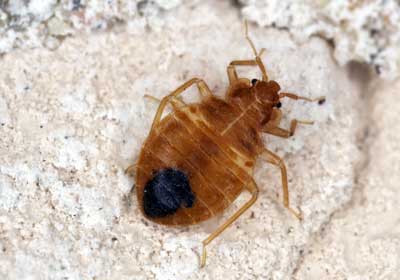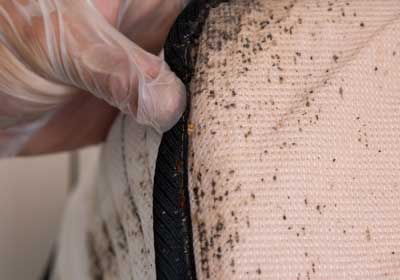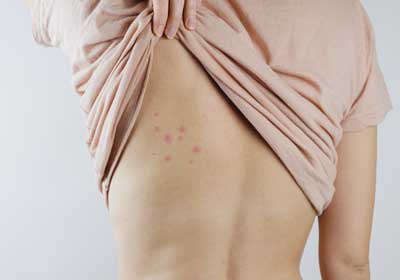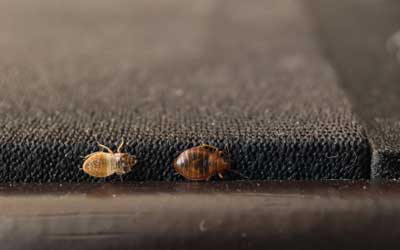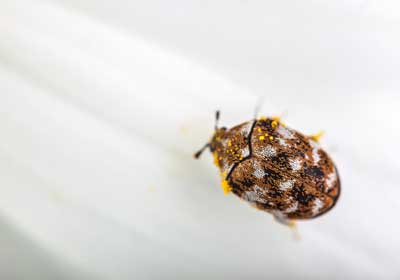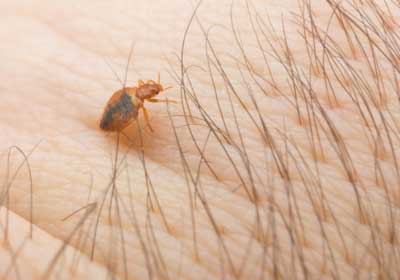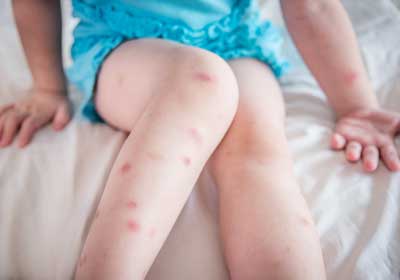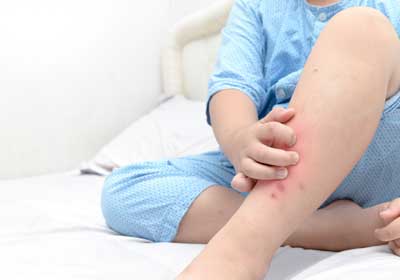Bed Bug Identification
1. What do bed bugs look like?
Bed bugs are reddish-brown, ovular insects. After a blood meal, their bodies become redder and engorged. Bed bug eggs are white, oblong, and only about 1 mm long. It’s sometimes said that a bed bug looks like an apple seed with legs.
2. How to spot bed bugs in Knoxville
Bed bugs don’t just hang out in beds. Though they do enjoy beds, they can be found everywhere in an infested home, including couches, baseboards, power outlets, picture frames, and holes and cracks in the wall.
3. Do I have bed bugs?
Often, the first sign of bed bugs is itchy red bumps on your skin, accompanied by small red or brown spots on your bedding or upholstery. You may find bed bugs crawling underneath your mattress, or you may not – they are excellent at hiding.
4. How do bed bugs spread in Knoxville?
Bed bugs spread by hitching rides, usually on used furniture. They like to crawl onto purses, into luggage, clothing, and much more. If you visit a place with an active bed bug infestation, they may try to hitch a ride home with you.
5. How to tell if you have bed bugs or carpet beetles
It can be difficult even for a trained eye to tell a bed bug apart from a carpet beetle, but fortunately their young look different from each other. Carpet beetle larvae look fuzzier and burlier than bed bug larvae. Bed bug larvae look a bit like tiny worms.
6. Do bed bugs bite?
Bed bugs bite at night and feed on the blood of their chosen host. Though bed bug bites aren’t painful, they progress to itchy, red bumps on your skin the next day.
7. What do bed bug bites look like?
Bed bug bites can be easily mistaken for other kinds of bug bites. They usually have a bright red center with a swollen ring around it. In some cases, rashes and welts form.
8. Do bed bug bites itch?
Bed bugs dish out some of the itchiest bites Knoxville has to offer. As is the case with most insect bites, resist the temptation to scratch them. It will only worsen your itchiness and lengthen the time it takes to heal.
9. Can bed bugs hurt me?
Bed bugs are annoying and gross, but the good news is they probably won’t put you in any real danger. They do not transmit diseases to humans and the damage they inflict on your property is typically minimal. Bed bug bites do cause allergic reactions (including anaphylaxis) in some people.
10. What kind of diseases can you get from bed bugs?
Although bed bugs have been found to carry viruses, bacteria, protozoa, and parasitic worms, there is no evidence that they can pass them on to humans. The main risk with bed bugs is allergic reaction and/or loss of sleep quality.
